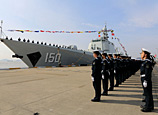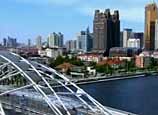
In the past four years, central banks in the advanced economies have been opting for new rounds of quantitative easing (QE) because the global financial crisis has exhausted the traditional instruments of monetary policy. And with investors seeking higher returns, more QE has been driving "hot money" (short-term portfolio flows) into high-yield emerging-market economies.
As these monetary policies remain in place, they are growing less effective, but continue to inflate potentially dangerous asset bubbles in Asia, Latin America and elsewhere.
Initially, these policies were characterized as "extraordinary" but "temporary". The goal, or so it was said, was to support the recovery and create foundations for solid growth.
But have these policies really improved economic prospects?
In the early days of the global financial crisis, even the most informed observers were hopeful. US Federal Reserve Chairman Ben Bernanke saw "green shoots" in the US economy as early as in spring 2009.
At the end of 2010, the annual growth of the advanced economies was 3 percent and projected to be 2.5 percent by 2012. In turn, emerging and developing economies were growing at 7.1 percent and their growth was expected to be 6.5 percent by 2012.
Nevertheless, the realities proved very different.
In the next two years, the expected growth of the advanced economies was almost halved to 1.3 percent, while that of the emerging and developing economies decreased by one-fifth to 5.1 percent. Most major forecasts were significantly downgraded by almost every organization, from the largest investment banks to the International Monetary Fund.

















 Moments that melt your heart during the Spring Festival travel rush
Moments that melt your heart during the Spring Festival travel rush


![]()
